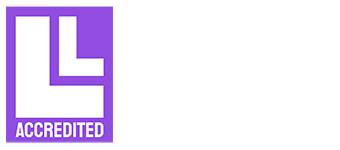-
Business Services ▾
-
Company & Commercial
- Legal Services for Landlords
- Commercial Property
-
Employment Law
- - Sponsor Licences
- - Employment law solicitors and HR training UK
- - Employment Tribunals Advice
- - HR Consultancy
- - Discrimination and Family Issues in the Workplace
- - Restrictive Covenants
- - Drafting and Varying Contracts of Employment
- - Redundancies and Restructuring
- - Disciplinary Hearings, Dismissals and Grievances
- - Trade Unions and Industrial Action
- - TUPE Guidance
- Commercial Litigation
-
Legal Compliance
- Debt Recovery
- Business Recovery & Insolvency
-
Company & Commercial
-
Individual Services ▾
- Residential Property
- Public Law
- Family & Matrimonial
- Children Law
-
Clinical Negligence
- - Abuse and neglect of the elderly
- - Fracture Negligence
- - Surgical Negligence
- - GP Negligence
- - Gynaecological Claims
- - Medication and Prescription Error Advice
- - Paediatric Claims
- - Orthopaedic Negligence
- - Physiotherapy or chiropractic treatment errors
- - Ophthalmic Eye Claims
- - Cancer Misdiagnosis Claim
- - Pressure Sores
- - Inquest Representation
- - Cauda Equina Syndrome Compensation
- - Anaesthetic Awareness – Administration Mistakes
- - Birth Injuries
- - Cosmetic Surgery Mistakes
- - Negligent Cardiac Care Claims
- - Cerebral Palsy
- - Chiropractic Injury
- - Colorectal Surgery
- - Consent to Treatment
- - Dental Negligence
- - Ear, Nose and Throat
- - Sepsis
- - Personal Injury
- Wills & Probate
- Dispute Resolution
-
Sports Law
- Employment Law
-
UK COVID-19 Inquiry
- LGBTQ+ Legal Advice
17th June 2025 | LGBTQ+ | LGBTQ+ Discrimination at work
5 Examples Of Sexual Orientation Discrimination In The Workplace
Sexual orientation discrimination is a problem LGBTQ+ employees face...

Sexual orientation discrimination is a problem that the LGBTQ+ community frequently faces.
Research has shown that ‘nearly a third of LGBTQ+ employees (31 per cent) did not agree they could be themselves at work. Of these, 53% have experienced discrimination’, emphasising how prevalent the issue is.
In this guide, we’ll cover some key information on sexual orientation, including examples of sexual orientation discrimination in the workplace.
If you believe that you’re being discriminated against due to a matter relating to your sexual orientation, you could be entitled to make a claim.
Is Sexual Orientation A Protected Characteristic?
In short, yes. In the UK, sexual orientation is one of 9 protected characteristics covered by discrimination law (Equality Act 2010), which prohibits discrimination at work.
The Equality Act 2010 states that you mustn’t be discriminated against on the grounds of your sexual orientation, whether you’re heterosexual, gay, lesbian, or bisexual.
What’s more, you shouldn’t be discriminated against because someone believes you to have a particular sexual orientation, or because you have a connection to an individual with a particular sexual orientation (discrimination by association).
5 Examples Of Sexual Orientation Discrimination In The Workplace
There are many examples of sexual orientation discrimination at work.
Five examples of sexual orientation discrimination in the workplace include, but are not limited to:
- Offering promotions to workers of one sexual orientation over workers of another;
- Harassment due to sexual orientation;
- Giving workers of a sexual orientation worse performance appraisals because of their sexual orientation
- Discriminating based on assumed sexual orientation
- Showing preferential treatment to those of a specific sexual orientation
1. Offering Promotions To Workers Of One Sexual Orientation Over Workers Of Another
Offering promotions to workers of one sexual orientation over workers of another is a key example of sexual orientation discrimination.
For instance, if someone were to apply for a promotion but didn’t receive it despite being the best candidate, because they were gay, this would be discriminatory.
This is an example of direct discrimination.
2. Harassment Due To Sexual Orientation
Under discrimination law, there are three types of harassment, including harassment related to protected characteristics.
Disparaging or prejudiced comments, abuse, or threats based on sexual orientation are considered to be discriminatory.
However, it’s important to note that not all employees will have the same opinions on this. For instance, what one person considers a joke, another might consider harassment.
This is why it’s all the more important for employers to have strict policies in place to ensure all workers are aware that there is a zero-tolerance approach to the discrimination and harassment of LGBTQ+ employees.
These measures should be in place to ensure that all workers, including those of the LGBTQ+ community, feel safe and supported by their employer, and that there are repercussions for those who don’t follow these policies.
3. Giving Workers Of A Sexual Orientation Worse Performance Appraisals Because Of Their Sexual Orientation
Another example of sexual orientation discrimination is giving workers of a specific sexual orientation a poorer appraisal than other employees on the sole basis of their sexual orientation.
Employers have the legal obligation to treat all workers fairly, regardless of their sexual orientation, but this doesn’t mean discrimination doesn’t still occur.
If you feel like you’re being discriminated against due to your sexual orientation, our team at Harding Evans can help.
We’re proud to stand by the LGBTQ+ communities across South Wales and beyond, providing legal help and advice and legal services that are tailored to the needs of LGBTQ+ individuals.
Contact our experienced solicitors today to find out how we can assist you.
4. Discriminating Based On Assumed Sexual Orientation
As we briefly touched on above, it is also unlawful to discriminate based on someone’s assumed sexual orientation.
For instance, it’s not lawful for an employer to pass over an employee for a promotion on the basis that they are thought to be homosexual.
This would still be considered discriminatory even if the person is in reality heterosexual.
5. Showing Preferential Treatment To Those Of A Specific Sexual Orientation
If employers are seen to show preferential treatment to workers of a specific sexual orientation, this could be seen as discriminatory.
That said, it’s important to note that a difference in treatment could be lawful if a particular sexual orientation is an important part of the job. This is what is known as an occupational requirement.
For instance, an employer might be looking to recruit a call handler who has specific experience of ‘coming out’ for an LGBTQ+ helpline.
In this circumstance, they’d be able to specify that the applicants be homosexual.
How We Can Help
At Harding Evans, our solicitors are well-versed in LGBTQ+ discrimination.
Our specialist employment law team has the experience to deal with a range of different cases, and is on hand to provide advice and an array of services for the LGBTQ+ community.
Get in touch with our solicitors today.













